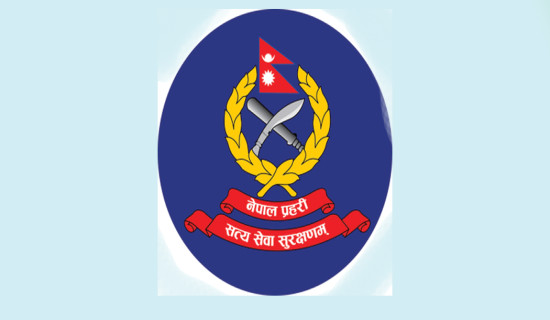- Monday, 29 December 2025
Keep Resurgent COVID-19 In Check
COVID-19 has re-emerged in several countries since January 2025. This time, variants of the Omicron virus have become active, spreading the disease to the US, Canada and Asia. NB.1.8.1 has been identified as the causative agent in China and several other Asian countries. According to the US Centres for Disease Control and Prevention, the variant is largely responsible for COVID-19 cases in the US. Experts have predicted a resurgence of the disease in Europe.
According to the WHO, NB.1.8.1, also nicknamed Nimbus, is a variant under monitoring. The WHO has listed six variants under monitoring. However, the variant has not caused as severe an illness as its predecessor did. But, given the variant outcompeting the previous variants, it could be more contagious. The lab data indicate that the variant may exhibit some immune escape. Immune escape is when variants are less responsive to immunity provided by previous infections or vaccines administered in the past. Over time, the efficacy of vaccines declines.
Short-term immunity
When many people fall ill and recover, they develop short-term immunity to infections. Such immunity also wanes over time. It is reported that most of the people infected with NB.1.8.1 will recover but some could be severely ill, requiring hospitalisation and some could develop long COVID. Long COVID is a health condition that develops sometime after an initial COVID-19 infection. The coronavirus variant detected in Canada is XFG, which has the moniker of Stratus. The variant is rapidly spreading to Europe and India. However, unlike NB.1.8.1, the variant is not under monitoring. XFG and NB.1.8.1 are considered main variants competing globally now.
Asian countries such as Nepal, India, China, Hong Kong and Thailand are under the grip of COVID-19 induced by NB1.8.1 or LF.7. The recent surge in Southeast Asia is due to the JN.1 variant. The variant has about three mutations, including NB.1.8.1 and LF.7. NB.1.8.1 is the most common among other variants. JN.1 is a descendant of Omicron BA.2.86, which also hit Nepal in the past. So JN.1 is not new to the country.
Around 20 Indian states are home to active COVID-19 cases now. But all are mild, requiring no hospitalisation. Singapore has more than 14,000 cases. Thailand has recorded 19 deaths with over 71,000 cases. Hong Kong has recorded a spike in the number of infections with over 30 deaths. China has been witnessing a surge in COVID-19 cases since March. However, the cases are mild and healthcare services have not been strained.
It is a matter of concern that at a time when the repercussions of the COVID-19 pandemic have not fully waned, Nepal has to face another wave of the disease. On June 24, a woman from Ilam died of COVID-19 at Biratnagar-based Nobel Teaching Hospital. The woman was referred to the hospital from Birtamod-based Birtacity Hospital. This is the first death from the new wave of the coronavirus disease. In Koshi Province, there are still seven people undergoing treatment for the disease.
As per the Ministry of Health and Population, the new wave of COVID-19 has spread to 25 districts. Bagmati Province has recorded the highest number of infected at 147, followed by Sudurpaschim at 25, Koshi at eight (including one death), Madhesh at five, Limbini at four and Gandaki at three. As the variant is mild as compared to previous variants, the Ministry has asked people not to panic unnecessarily. However, the Ministry has instructed the people to take precautions against catching the disease. The people are familiar with the COVID-19 protocols such as washing hands with soap or water or sanitiser, wearing masks, maintaining social distancing and avoiding crowds.
The Ministry has said that there are adequate supplies of medicines for emergency cases. Required manpower is on standby. Medical and emergency teams are also on standby. What is more, quarantine arrangements are also in place for people coming to Nepal from affected areas such as India. It may be noted that health emergencies may appear out of nowhere, and so health authorities should be on standby to deal with such emergencies without delay.
Nepal and India have open borders. Past experiences show that when COVID-19 cases surge in India, Nepal also gets affected. In view of rising COVID-19 cases in India and China, the country’s immediate neighbours, experts have suggested that the authorities concerned increase surveillance measures and step up testing on patients with flu-like symptoms. The Ministry has said that testing arrangements have been made at 17 border entry points and three airports. It would not be possible to close the entry points but monitoring the movements of people and making testing arrangements can drastically reduce the transmission of the disease.
Testing kits
As per the Ministry, Nepal has 121,000 doses of the COVID-19 vaccine. And the number of testing kits is very low. The Ministry should see to it that the doses in stock are still efficacious. If not, arrangements should be made to procure the required doses. It was reported during the COVID-19 pandemic that many doses became useless owing to negligence on the part of the authorities concerned towards using them properly. In December 2023, four million doses of the Sinovac vaccine donated by China expired. Such negligence should not occur again. Vaccines should not be stored unnecessarily. They should be used as per the requirements. Likewise, testing kits should be in adequate stock.
Many people have abandoned COVID-19 protocols, which need to be revived in view of the resurgence of new cases. After all, COVID-19 has staged a comeback. The threat of the disease has not faded away completely. It may be noted that Worldometer has stopped updating COVID-19 cases around the world since April 13, 2024. It seems the COVID-19 tracker needs to be reactivated in view of the new cases appearing again.
(Maharjan has been regularly writing on contemporary issues for this daily since 2000.)







-square-thumb.jpg)






-original-thumb.jpg)

